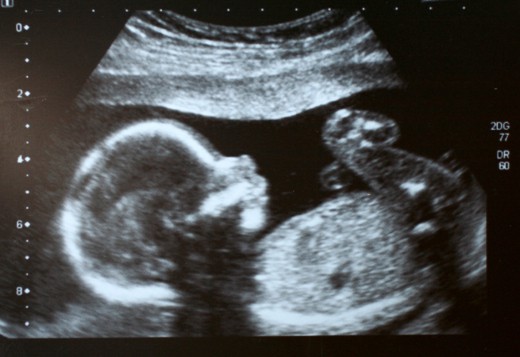In the realm of prenatal care and obstetrics, expectant parents may encounter various terms and conditions, one of which is marginal cord insertion. This article aims to elucidate the concept of marginal cord insertion, its implications, and the circumstances under which individuals might seek the counsel of a medical malpractice lawyer.
Understanding Marginal Cord Insertion
Marginal cord insertion, also known as marginal cord attachment, is a fascinating yet concerning prenatal condition that centers on the manner in which the umbilical cord attaches to the placenta. In a typical pregnancy, the umbilical cord gracefully inserts itself into the central region of the placenta. This positioning is a harmonious design, facilitating the even distribution of vital nutrients and oxygen from the mother to the developing fetus. It’s as if nature’s blueprint aims for perfection.
However, in cases of marginal cord insertion, this arrangement deviates from the norm. Here, the umbilical cord chooses an unconventional path, attaching itself to the edge or margin of the placenta, rather than the center. This variation in attachment can have significant implications for both the pregnancy and the developing baby.
Exploring the Causes of Marginal Cord Insertion
While the exact cause of marginal cord insertion remains elusive, the medical community has identified risk factors that may elevate the likelihood of this condition manifesting. These risk factors include:
- Multiple Pregnancies: In pregnancies involving twins, triplets, or more, the dynamics between the placenta and the umbilical cord can become more complex, increasing the chances of marginal cord insertion.
- The Use of Fertility Treatments: Assisted reproductive techniques, such as in vitro fertilization (IVF), can influence the positioning of the umbilical cord, possibly leading to marginal cord insertion.
- A History of Previous Cesarean Section: Women who have undergone cesarean sections in previous pregnancies may be at higher risk for marginal cord insertion in subsequent pregnancies.
- The Presence of an Abnormal Placenta: Certain placental anomalies or irregularities can contribute to marginal cord insertion, creating unique challenges for both the fetus and healthcare providers.
- Underlying Medical Conditions: Expectant mothers with specific medical conditions, like diabetes or lupus, may experience a higher likelihood of marginal cord insertion.
Understanding these risk factors is essential in the early identification and management of pregnancies affected by marginal cord insertion.
Unraveling the Mystery of Symptoms
Typically, pregnancies marked by marginal cord insertion do not present any overt symptoms during gestation. This absence of noticeable signs can often make it challenging to diagnose this condition without the aid of advanced medical imaging techniques.
Expectant mothers may only begin to suspect a concern when they observe abnormalities in fetal growth or experience unusual fetal movements. Furthermore, a reduction in amniotic fluid levels can be another subtle hint. These signs and symptoms are not always easily recognizable and often require a vigilant approach to routine prenatal care to be detected.
Diagnosing Marginal Cord Insertion: The Role of Ultrasound
The journey to diagnose marginal cord insertion often begins with an ultrasound examination. During this critical screening, a highly skilled ultrasound technician meticulously measures the distance between the site where the umbilical cord inserts and the edge of the placenta. This critical measurement serves as the linchpin in identifying the presence of marginal cord insertion.
If this distance measures less than 2 centimeters, it is considered indicative of marginal cord insertion. It’s through the power of ultrasound technology that healthcare providers can unveil this intricate aspect of prenatal health, allowing them to make informed decisions and provide essential care.
Navigating Treatment and Management
Once the diagnosis of marginal cord insertion is confirmed, patients and healthcare providers must embark on a journey of close monitoring and meticulous care. It’s essential to understand that there is no specific treatment to rectify the positioning of the umbilical cord. However, the healthcare team will closely watch over the pregnancy to ensure that the baby is receiving the requisite nourishment and oxygen.
In some instances, due to the increased risk of complications associated with marginal cord insertion, early delivery may be recommended as a proactive measure. This decision is made with the utmost care and consideration for the health and well-being of both the mother and the baby. It underscores the importance of vigilance and medical expertise in managing pregnancies affected by marginal cord insertion.
The complexities of marginal cord insertion highlight the intricacies of prenatal care. Understanding the causes, the absence of symptoms, the diagnostic process, and the management strategies is pivotal in ensuring the best possible outcome for both the expectant mother and her developing baby. This nuanced condition underscores the significance of prenatal care and the importance of early detection and responsive healthcare practices.
Complications of Marginal Cord Insertion
Marginal cord insertion can raise the risk of several complications for the baby, including:
- Intrauterine growth restriction (IUGR)
- Preterm birth
- Low birth weight
- Birth defects
- Stillbirth
In rare cases, marginal cord insertion can also lead to complications for the mother, such as excessive bleeding or placental abruption.
Failure to Diagnose and Its Consequences
In situations where healthcare providers fail to diagnose or adequately monitor marginal cord insertion, the repercussions can be distressing for both the baby and the expectant mother. Timely and accurate diagnosis is the linchpin of prenatal care, ensuring that necessary precautions are taken to safeguard the health of the mother and her developing child. A failure in this regard may lead to undetected complications, potentially resulting in adverse outcomes that could have been prevented with proper medical attention. Consequently, when healthcare providers neglect to diagnose marginal cord insertion, the consequences may transcend medical concerns, necessitating legal recourse.
The Critical Role of Adequate Monitoring
Once diagnosed, pregnancies affected by marginal cord insertion require vigilant and thorough monitoring. Neglecting this aspect of care can be perilous, as it can lead to unforeseen complications that might have been averted with adequate oversight. Proper monitoring encompasses a range of assessments and tests, including frequent ultrasounds and non-stress tests to evaluate the baby’s growth and well-being. Failing to adhere to these protocols could put the baby at risk, leading to developmental issues or even preterm birth. In such circumstances, the need for comprehensive and diligent medical care becomes evident, and any lapses in this regard could necessitate legal intervention to address the potential consequences.
Complications During Labor: The Importance of Swift Action
Marginal cord insertion can elevate the risk of complications during the labor and delivery process. Among these complications, umbilical cord prolapse or compression stand out as potentially life-threatening situations that require immediate and decisive action. Healthcare providers must be well-prepared to address these emergent scenarios swiftly and with the utmost expertise. Failing to do so can result in severe consequences, including oxygen deprivation to the baby, distress, and long-term health issues. As such, the importance of responsive medical care during labor cannot be overstated, and any lapses or negligence in these critical moments may lead to the consideration of legal recourse.
Negligent Care as a Form of Medical Malpractice
In cases where healthcare providers act negligently, misdiagnose, or offer substandard care in pregnancies affected by marginal cord insertion, it can amount to a clear case of medical malpractice. Such instances of negligence not only jeopardize the health and well-being of the expectant mother and her baby but also breach the fundamental principles of medical care and responsibility. Pursuing legal advice from a medical malpractice lawyer becomes essential when confronted with such circumstances. Legal recourse not only serves as a means to seek justice for the suffering endured, but also as a way to hold healthcare providers accountable for their actions. Moreover, legal action can contribute to preventing similar situations from recurring, thus bolstering the standards of prenatal care and ensuring the safety of future pregnancies.
While marginal cord insertion itself is not uncommon, it is crucial for healthcare providers to promptly diagnose, closely monitor, and address any complications that may arise. When these essential elements of care are neglected or mishandled, the consequences can be severe, necessitating legal intervention to protect the rights and well-being of the expectant mother and her child.
Additional Information for Victims and Witnesses
Witnesses play a crucial role in assisting victims and authorities in medical malpractice cases. Your testimony, as well as the testimony of expert witnesses and other healthcare workers, may be pivotal in bringing the responsible party to justice.
Seeking Legal Assistance
If you or a loved one has experienced complications related to marginal cord insertion during pregnancy, and you suspect that medical negligence played a role, it’s important to seek legal guidance. A medical malpractice lawyer can review the circumstances of your case, consult with experts, and determine if substandard care contributed to the adverse outcomes.
Legal action in cases of medical malpractice can help individuals seek compensation for medical expenses, ongoing care, and emotional distress resulting from inadequate prenatal care. It also serves as a means of holding healthcare providers accountable for their actions, potentially preventing similar situations in the future.
Here are some additional things to keep in mind if you are considering legal action:
Statute of limitations: Each state has a statute of limitations for medical malpractice claims. This means there is a limited amount of time after the alleged negligence occurred to file a lawsuit.
Medical expert witness: In most medical malpractice cases, it is necessary to retain a medical expert witness to testify about the standard of care and whether the defendant healthcare provider deviated from that standard.
Evidence: Gathering evidence to support your claim is essential. This may include medical records, expert testimony, and witness statements.
Marginal cord insertion is a prenatal condition that can have significant implications for both the pregnancy and the developing fetus. Close monitoring and timely, accurate diagnosis are essential in pregnancies with marginal cord insertion. If you believe that medical negligence has played a role in adverse outcomes related to this condition, don’t hesitate to seek legal advice from a medical malpractice lawyer to protect your rights and seek appropriate compensation.
Read these articles to learn more about:




